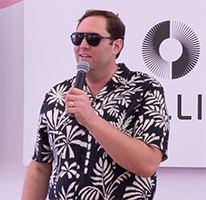Generation Y, those folks born between 1981 and 2001, have long had a unique identity as purchase influencers for high-ticket items, such as vehicles and vacations. Now the group is coming into its own as a spending force.
These consumers are among the most savvy potential customers around. They have grown up with computers, and are very comfortable researching purchases right up to the point of sale. Are marketers ready for them?
Not really, according to Ann Fishman, president of Generational Targeted Marketing Corp. Fishman told of a young woman who had extensively investigated buying a new car before settling on a Honda Civic. She had saved for the initial payment, and approached a dealership with cash in hand – only to be ignored by the salespeople because of her age. Frustrated, she went back to her computer and discovered that a Nissan Sentra would be just as satisfying to her. Nissan, apparently, had trained its salespeople to graciously receive her money.
A lost sale for Honda? Yes, but more than that, because Generation Y is a team-oriented group, one that relies heavily on word-of-mouth for recommendations. The young woman in question convinced her best friend to purchase a Nissan Sentra as well, and doubtless the two influenced others.
Fishman presented insights into six consumer generational segments, ranging from the oldest (“The G.I. Generation,” who came through The Great Depression and fought in World War II) to the 9/11 Generation. Marketers’ messages need to match products and services offered to what motivates them, according to Fishman. She offered the following pearls:
* The G.I. Generation – those born between 1901 and 1924 – are also team-oriented achievers. Members of this group created most of the ubiquitous aspects of modern life, such as Social Security, the space program and the Disney Co. It is also among the most literate, and will take the time to read detailed information about marketers’ products.
* The Silent Generation – sired between 1925 and 1942 – tend to be helpers. While this generation has not produced any American presidents, it has produced nearly every great civil rights leader, and many of the 20th Century’s leading feminists. It sees itself as vibrant, and emotionally members are about 10 to 15 years younger than their chronological age. They do not want to be marketed to as “senior citizens”: They want to be treated as repositories of wisdom, managers and mentors. While this generation has traditionally been thrifty, they are realizing that now is the time to spend – and they have grandchildren, upon whom they dote and lavish goods and services.
* Baby Boomers – those born at the end of World War II through about 1960 – were the most “mothered” generation, receiving the love and attention of stay-at-home mothers. This generation is intently focused on its own needs, as it grew up competing with 78 million other Baby Boomers. It is very concerned about the “corporate citizen” values of the companies it patronizes and the environment; it distrusts authority, preferring recommendations from fellow members to authoritative recommendations; and is nostalgic for its youth (both the culture and the spirit – it tends to purchase cars marketed at Generation Y, which is two generations younger.) The money pressures of previous generations were not part of their lives growing up, and they have a sense of entitlement to the American dream – at least as it expresses itself in goods and services. Best of all, this generation is in its peak earning years. And like the woman of the Generation Y anecdote, women in this demographic group are the first to en masse make their own money, and the are aggressively spending it.
* Generation X – folks born between 1960 and 1981 – currently exert the greatest pressure on what is purchased. This demographic is self-reliant and cynical: It was the first to have to check its Halloween candy for razor blades and poisons. It feels that government programs will lead to higher taxes, and grew up in an era when sex – through sexually transmitted diseases – could be fatal. So what does it want? Family and security. People within this group experienced high levels of parental divorce, and they seek stability in their home lives, and the time away from work to enjoy it. But don’t try to spin this generation: It came of age amid the Watergate crisis, and has a high suspicion of many once-golden institutions, including government, the press and Madison Avenue.
* Generation Y – those sandwiched between Gens. X and 9/11 – grew up amid a resurgence of traditional support structures, including stronger family, religious and government institutions. It is a generation that believes in its own ability to make changes, to the point of overconfidence. They are brand-loyal – provided they have discovered the brands through their own devices, such as peer recommendations or self-guided investigations over the Internet. But it will use these channels to gather the information it craves – and it does crave a great deal of data about potential purchases. Finally, it expects that pitches will be customized and personalized to it on an individual level.
* Finally, Generation 9/11. The oldest of the latest generation identified by Fishman aren’t five yet, but their characteristics are being mapped. These consumers are going to have the most protected childhoods of the 15 or so generations that have been raised in America. Children born during the 21st Century are coming of age at a time when anti-kidnapping systems such as “Amber Alerts;” concerns about violence perpetrated by other students, such as the Columbine massacre; and fears of terrorist attacks are facts of daily life. Marketers have already started to use this generation in their pitches to parents. For instance, companies such as OnStar, the vehicle assistance system, use young children in ads that tout the system’s security aspects, according to Fishman. This constant message of “you are potentially under attack” is giving birth to people who will avoid risk, and who will place a high value on fitting in. When they come of age, they will seek conservative economic values and reassurances that their purchases will somehow further their personal safety.
Fishman made her observations during an opening keynote at the National Center for Database Marketing Conference in Chicago.
 Network
Network

